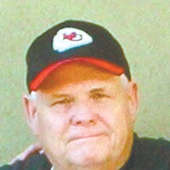"Where's the beef?"
About 31 years ago, the line in this title became an idiom of the American vernacular. The Wendy's fast food chain coined the phrase as part of a national campaign television ad strategy. Perhaps more importantly, it is a question that shines a light on, a very unique part of our American diet.
During the recent week of spring break, channel 242 (the western channel) on my satellite, aired the reruns of the mini series, "Centennial." That 12-part (24 hours) series was based on the book of the same name by James Michener.
The sixth 2-hour installment, titled "The Longhorns," originally aired in December of 1978, (Michener wrote the novel and named it, as his own special contribution, emphasizing the celebration of our country's 200th anniversary in 1976). Segment 6 is a fictional, but very authentic account, of how America developed its love affair with beef.
I have written about this historical story on more than one occasion, but a brief refresher is in order. Pork, chicken, and fish, were the main meat staples in our country prior to this period in the late 1860's. Chickens were easy to raise and they brought with them the added reward of an egg supply. When they were butchered, they were eaten immediately, so storage was not an issue.
Early Americans settled near the oceans, and also along the numerous rivers in our country. Roads and railroads were not available during our early historical settlement era, so living near the water was also necessary, owing to the added ease of transportation it offered. These waters, both oceans and rivers, also provided early settlers with a generous supply of fish. Fish could be eaten fresh, but it was quite common to find smoked or salted fish, preserved for later use.
Pork was perhaps the single most common meat source in early America. Again, smoking and salt curing were common preservative methods for storing pork. Ham, sausage, and bacon, could be found on almost any table in our early history.
Beef was a different story. The salting and curing of beef was not nearly as common in pre-Civil War history. Fresh beef was eaten, but it was far from a regular staple. Milk from cows was a different story.
Milk, butter, and cheese were very much a part of most American diets. It was not until the time of the Longhorn story, that the consumption of beef would become an American legendary staple on most family tables.
Geography, science, and technology, all contributed to this sudden change. Geography was at the forefront. Following the Civil War, the railroad system had advanced west across the Mississippi River, to Missouri and eventually Kansas. The movement of goods and services to the densely populated areas of the northeast was now a reality.
Texas was devastated by the war economically. They had one resource that the east wanted, beef. In southwest Texas, there was an estimated 5-6-million longhorn cattle roaming free on the range. These cattle would bring as much as $12-$14 a head if you could get them to the railheads in the Kansas City area.
Transported from there, a live steer might bring as high as $85 a head in New York. The longhorns of Texas could be rounded up for free, or for about $2 a head from individual sellers. The only issue was the movement of these cattle from Texas to the railhead. Thus the cowboy story, and the historical "Cattle Drive," entered our western lore.
Cowboy teams of about a dozen men would lead herds numbering about 2,000, north from Texas to the railheads. This practice lasted only a few years. Many of the cowboys noted that the vast grasslands in states like, Kansas, Colorado, Wyoming, and Montana, were ideal for raising large cattle herds. The buffalo, which had numbered in the tens of millions, had been virtually exterminated, so the grassland was there for the taking.
They soon began to bring complete herds north to these areas, and immense ranches, some containing several million acres were opened. The supply of beef was ready and cheep now, and the railroad was close by.
In Kansas City and Chicago, science entered the business. Huge packing plants opened. Some of the beef was canned in these meat factories, for shipment to the large cities. Fresh-butchered meat was sent in refrigerated rail cars back to the east too.
Barbecue has always been a cooking style common in our country's history. Cooking of a steak or a hamburger over a wood or charcoal fire is as American as any symbol I can imagine. During my lifetime, the barbecue grill could be found at almost any home. You could also find beef on the menu at almost any restaurant.
In this new century, the question of "Where's the Beef," has some new wrinkles. Despite the fact that we Americans are living much longer than at any time in history, there are a lot of people, who are professing, that eating beef is not good for us.
I am not going to enter that argument. I know that we currently have a program ongoing in our community called, "Healthy Nevada." I admire their zeal in attempting to change some of the dietary practices of our citizens.
Having said that, I will do my best to help them, but when it comes to steak and the "All American Hamburger," I must draw the line.
One only has to drive by some of our local legendary hamburger drive-ins like the White Grill and the Del-Way, to make my case. Decades into their tenure, both are still busy, selling their classic hamburgers.
Beef, cowboys, steak, and hamburgers, are all part and parcel of America. Eating healthy is a great idea, but I will always ask, "where's the beef!"

